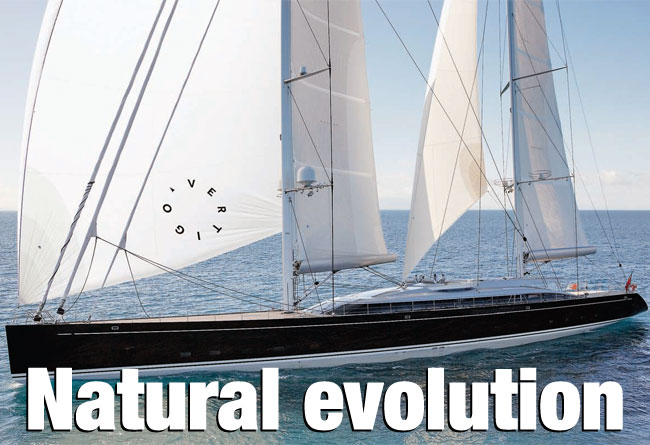
Philippe Briand is one of a small number of designers of winning IOR and Open class designs to have successfully stepped across to performance superyachts. We talk to the creator of the world champion Ton Cup designs Freelance and Passion 2 about his work
Born in France but today based in London, Briand has been designing boats since childhood. He remains driven by a passion for both performance and aesthetics. His own extensive racing background (he steered many of his own designs) instils his work with the necessary balance of science and intuition, while Briand’s well-known artistic flair ensures that his boats tend towards the beautiful in terms of look.
More than 12,000 yachts of all shapes and sizes have been built to Briand designs, ranging from dinghies through to the 67m ketch Vertigo, Briand’s largest launching to date. As a measure of the work involved in these largest projects, Vertigo’s design process started in 2004 and was not completed until 2007. She was built by Alloy Yachts in New Zealand and launched in 2011. We asked Briand about the scale of evolution from those early carbon-fibre Half Tonners to some of today’s greatest sailing superyachts…
The design of a superyacht and a racing yacht have one fundamental principle in common, which is that one must work within a set of constraints. For a racing yacht we have rules that set out exactly the boundaries within which one has to design the fastest vessel. For a performance superyacht the owner and MCA SOLAS regulations define the envelope… In my opinion, designing a good superyacht requires the same process as designing a successful racing yacht – only there are rather more layers to consider! Things that a racing sailor never need encounter: accommodation, energy efficiency, noise management, aesthetics, manoeuvring, loading plus numerous safety issues.
In the case of Vertigo the brief was to complete the naval architecture for a 67m robust, ocean-going yacht to sail around the world. To meet the owner’s requirements of a yacht that would at all times provide a safe haven for his young family, the vessel required power to manoeuvre through or to outrun the worst weather conditions. We were also asked to incorporate a very sizable saloon and an extensive flybridge as well as a midship lazarette. And of course the boat had to perform exceptionally well under sail.
Then we also had to take into account MCA SOLAS, observing the same weight rules that apply to a motor yacht. Fireproof bulkheads over 300mm thick, for example – not ideal in terms of weight saving. And lazarette door that must open a minimum of 60cm above sea level – which in practice defines the freeboard.
We invite you to read on and find out for yourself why Seahorse is the most highly-rated source in the world for anyone who is serious about their racing.
To read on simply SIGN up NOW
Take advantage of our very best subscription offer or order a single copy of this issue of Seahorse.
Online at:
www.seahorse.co.uk/shop and use the code TECH20
Or for iPad simply download the Seahorse App at the iTunes store


